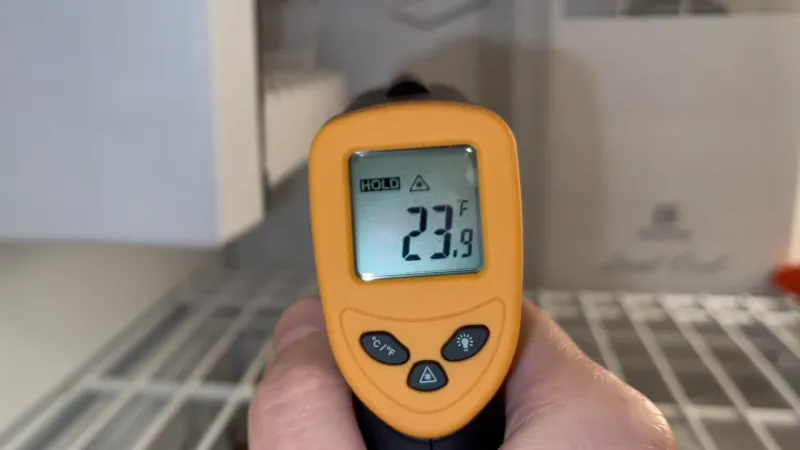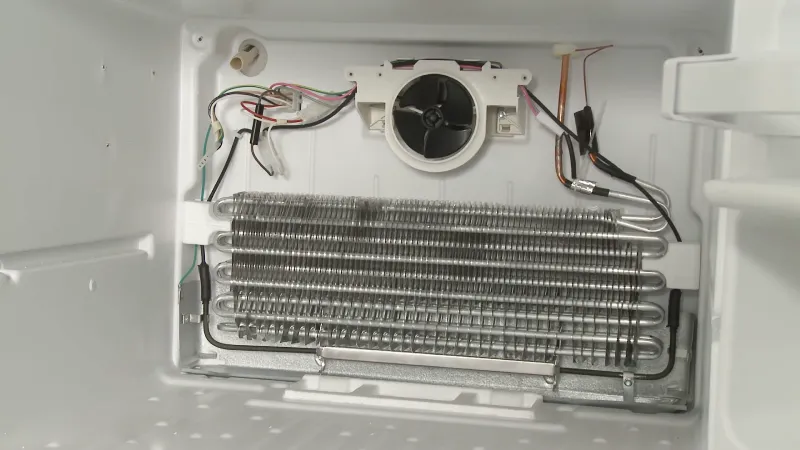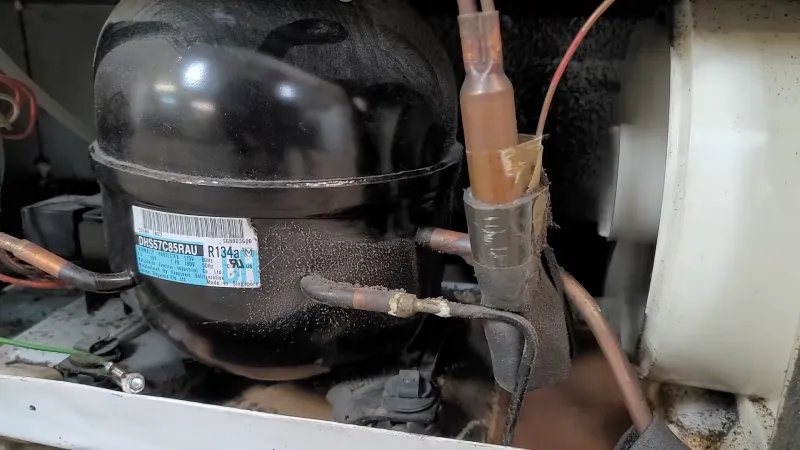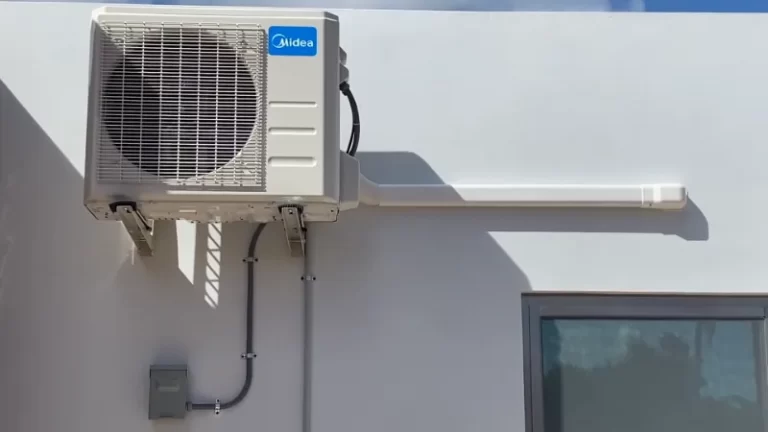How to Fix Refrigerator Cooling Problem?
A properly functioning refrigerator is essential for preserving food and keeping it fresh. When a refrigerator stops cooling properly, it can quickly become a major inconvenience and even cause food waste.
Unfortunately, refrigerator cooling problems are quite common and can occur for a variety of reasons. In this blog, we will outline 5 to 10 simple steps to help you fix your refrigerator cooling problem quickly and effectively.
Whether you’re dealing with a noisy fridge, a fan that won’t turn on, or your food just isn’t staying cold enough, we’ve got you covered. Let’s get started!
You'll Learn About
How to Fix Refrigerator Cooling Problem?
If your refrigerator is not cooling properly, there are several steps you can take to try to fix the issue before calling a repair person. Firstly, check to make sure the refrigerator is properly plugged in and the power cord is securely connected.
Next, verify that the temperature settings are correct. If these simple steps do not resolve the issue, try cleaning the condenser coils with a vacuum or brush. If the problem persists, it may require a more complex repair such as replacing the fan or fixing the compressor.
In general, it’s best to seek the help of a professional if you are unsure of how to fix a refrigerator issue.
Verify the Power Source
One of the first and simplest things to check if your refrigerator is not cooling is to verify the power source. The following steps will guide you through this process:

Check to See if the Refrigerator is Plugged in
Before you begin any troubleshooting, it’s essential to ensure that the refrigerator is plugged into a working outlet. If the refrigerator is not plugged in, it will not function, and the cooling system will not work.
Ensure the Power Cord is Securely Connected
In some cases, the power cord may have come loose, or the connection between the cord and the outlet may be faulty. To verify the connection, unplug the power cord and then plug it back in, making sure it is securely connected to the outlet. If the refrigerator is still not working, try plugging it into a different outlet to see if the problem is with the outlet.
These simple steps can help you fix a refrigerator that is not cooling, but if the problem persists, there may be other factors that need to be addressed. In the next sections, we will look at some more complex issues that can cause a refrigerator to stop cooling and provide instructions on how to fix them.
sElectrolux Refrigerator Temperature Problems and Solutions
Adjust the Temperature Settings
Your refrigerator has temperature settings that regulate the internal temperature and keep your food fresh. If your refrigerator is not cooling, it could be because the temperature settings are not correctly adjusted. Here’s how to verify and adjust the temperature settings:

Temperature Settings
The temperature settings on your refrigerator control the temperature of the refrigerator and freezer compartments. Most refrigerators have a control panel on the inside, where you can adjust the temperature. The temperature should be set between 33°F to 40°F for the refrigerator and 0°F to 5°F for the freezer.
How to Verify and Adjust the Temperature
- Locate the temperature control panel on the inside of your refrigerator.
- Check the current temperature setting and compare it to the recommended temperature range.
- If the temperature setting is too high, turn the dial or press the button to lower it.
- Wait for a few hours to see if the temperature changes.
- If the temperature remains too high, repeat the process until it reaches the desired temperature.
It’s important to regularly check and adjust the temperature settings to ensure that your refrigerator is working properly. If the temperature settings are not adjusted correctly, your food may spoil, and the energy consumption of your refrigerator will increase.
In some cases, if the temperature control is broken, you may need to replace it. If the problem persists even after adjusting the temperature, it may be due to another issue and require a repair by a professional.
How to Access Using Evaporator Coil Access Panel?
Clean the Condenser Coils
A refrigerator is a complex machine that requires a number of components to work together in order to keep your food cold. One of the most important parts of this machine is the condenser coils. These coils are responsible for dissipating heat that is generated as the refrigerant goes through the cooling process.
If the coils are dirty or clogged, they can become less efficient and cause your refrigerator to run hot, which can result in food spoilage and energy waste.

Importance of Clean Condenser Coils
The condenser coils play a crucial role in the cooling process. They work by removing heat from the refrigerant as it flows through the coils. This heat is then dissipated into the air, allowing the refrigerant to be cooled.
However, if the coils become dirty, they can become less efficient at dissipating heat. This can cause your refrigerator to run hot, which can result in food spoilage and increased energy costs. In addition, a clogged condenser coil can cause your refrigerator to overheat and stop working altogether.
Clean the Coils With a Vacuum or Brush
Fortunately, cleaning the condenser coils is a simple process that can be done using a vacuum or brush. To clean the coils using a vacuum, simply turn off the refrigerator and unplug it. Then, remove any debris from around the coils, such as dirt or lint, using a vacuum with a crevice tool attachment.
If you prefer to use a brush, you can use a soft-bristled brush to gently clean the coils. After cleaning the coils, plug the refrigerator back in and turn it back on. You should notice an improvement in performance and energy efficiency within a few hours.
Cleaning the condenser coils is an important step in maintaining the efficiency and longevity of your refrigerator. By regularly cleaning the coils, you can help prevent food spoilage, reduce energy costs, and extend the life of your refrigerator.
Replace the Evaporator Fan
The evaporator fan is a critical component in the cooling system of your refrigerator. Its main function is to circulate air over the evaporator coils to help maintain an even temperature throughout the appliance. A faulty evaporator fan can cause cooling problems, resulting in warm spots or a rise in the internal temperature of your refrigerator.

Determining if the Fan is Faulty
To determine if the evaporator fan is faulty, there are a few things you can check:
- Listen for a loud noise: If the fan blade is damaged, it can cause a loud noise when it spins.
- Check the air flow: If there is no air flow coming from the vents in the refrigerator, it could indicate a faulty fan.
- Check the motor: If the motor is hot to the touch, it may be indicating an issue with the fan.
Steps to Replace the Fan
If you determine that the evaporator fan is faulty, you can replace it yourself with the following steps:
- Unplug the refrigerator: For safety purposes, unplug the refrigerator before attempting to replace the fan.
- Locate the evaporator fan: The evaporator fan is typically located in the back of the refrigerator, near the coils.
Remove the Old Fan
Use a screwdriver to remove the screws holding the fan in place. Then, gently pull the fan out and disconnect the wiring.
- Install the new fan: Connect the wiring for the new fan, and then secure it in place with the screws.
- Plug in the refrigerator: Once the new fan is in place, plug the refrigerator back in and verify that it is working properly.
It’s important to note that if you are unsure about your ability to safely replace the evaporator fan, it’s best to call a professional for assistance. Replacing the evaporator fan can be a complex process, and incorrect installation can cause further issues with your refrigerator.
Repair the Compressor
Repair the Compressor A properly functioning compressor is essential for the efficient cooling of a refrigerator. The compressor circulates refrigerant, which helps to absorb heat from inside the refrigerator and release it to the outside.
If your refrigerator is not cooling as it should, the compressor might be the cause of the problem. Here’s how you can determine if your compressor is faulty and what you need to consider when repairing or replacing it.
The Function of the Compressor
The compressor is a motor that is responsible for circulating refrigerant throughout the refrigerator. The refrigerant passes through the condenser coils, which release the heat absorbed from inside the refrigerator, and the evaporator coils, which absorb the heat from inside the refrigerator. The compressor also regulates the pressure of the refrigerant to maintain the appropriate temperature in the refrigerator.
How to Determine if the Compressor is Faulty
If the compressor is not functioning properly, the refrigerant will not circulate as it should, and the refrigerator will not cool as it should. To determine if the compressor is faulty, you can listen for unusual noises, such as buzzing or knocking sounds, when the refrigerator is running. If you hear these noises, the compressor might be faulty and in need of repair or replacement.

Considerations for Repairing or Replacing the Compressor
If you determine that the compressor is faulty, you need to decide whether to repair or replace it. Replacing the compressor can be more expensive, but it will provide a more permanent solution to the problem. If you choose to repair the compressor, you need to make sure that the repair is done correctly to ensure that the refrigerant circulates as it should and that the compressor functions properly.
A faulty compressor can be a major cause of cooling problems in a refrigerator. If you determine that the compressor is the cause of the problem, you need to carefully consider whether to repair or replace it. Regardless of your choice, make sure that the repair or replacement is done correctly to ensure that your refrigerator functions efficiently and effectively.
Crystal Cold Refrigerator Problems and Solutions
Conclusion
A properly functioning refrigerator is essential for keeping your food and drinks fresh and safe. When experiencing cooling problems, it’s important to first check the power source, temperature settings, and condenser coils.
If the issue persists, it may be necessary to replace the evaporator fan or even repair the compressor. While these steps can help resolve common cooling issues, it’s always best to seek professional help if you’re unsure or uncomfortable with any of the repairs.
By following these tips and taking care of your refrigerator, you can ensure that it continues to function properly and keep your food and drinks at the optimal temperature.



